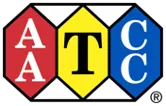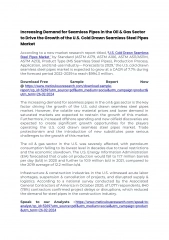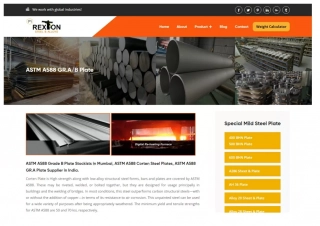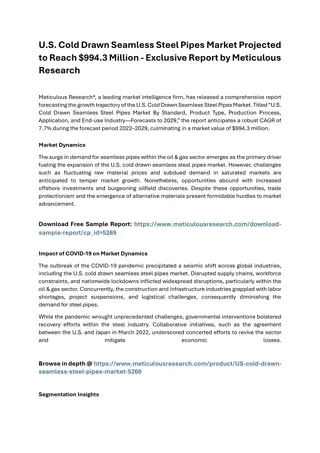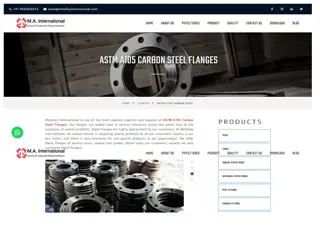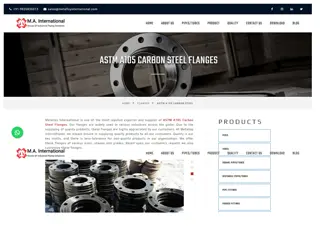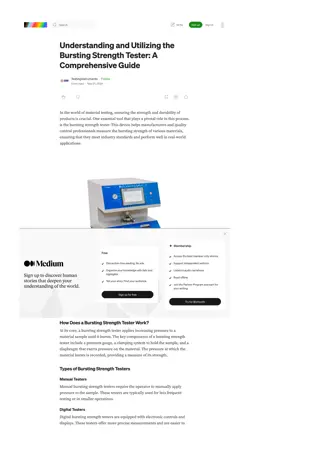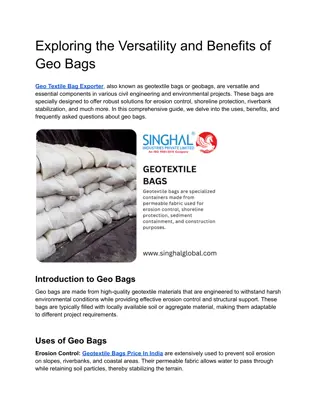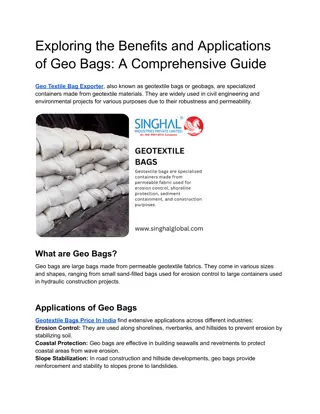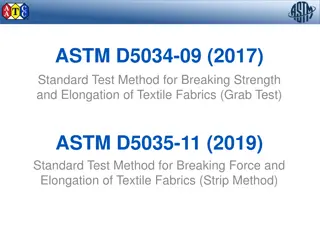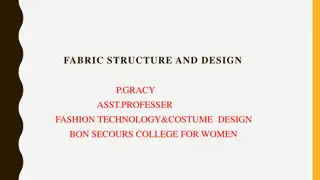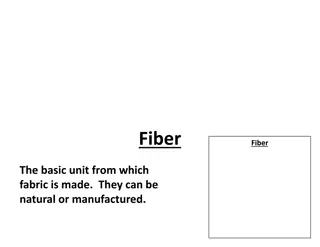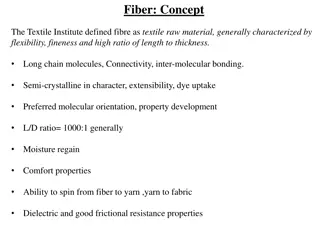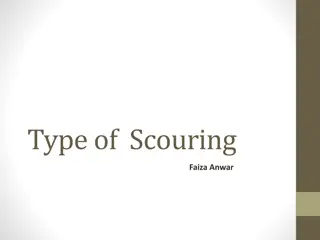ASTM D3786/D3786M-18 Standard Test Method for Bursting Strength of Textile Fabrics
This standard test method, ASTM D3786/D3786M-18, specifies the procedure for determining the bursting strength of textile fabrics using a diaphragm bursting strength tester. The test involves clamping the specimen over an expandable diaphragm and applying pressure until the fabric ruptures. The bursting strength is calculated as the difference between the pressure needed to rupture the specimen and the pressure to inflate the diaphragm. Applicable to knits, wovens, or nonwovens, this test method helps evaluate the fabric's resistance to bursting when distended by a perpendicular force. Various apparatuses, sampling techniques, conditioning requirements, and procedures are outlined in ASTM D3786/D3786M-18.
Download Presentation

Please find below an Image/Link to download the presentation.
The content on the website is provided AS IS for your information and personal use only. It may not be sold, licensed, or shared on other websites without obtaining consent from the author. Download presentation by click this link. If you encounter any issues during the download, it is possible that the publisher has removed the file from their server.
E N D
Presentation Transcript
ASTM D3786/D3786M-18 Standard Test Method for Bursting Strength of Textile Fabrics Diaphragm Bursting Strength Tester Method
Principle Specimen is clamped over an expandable diaphragm; the diaphragm is expanded to the point of specimen rupture. The difference between the total pressure required to rupture the specimen and the pressure required to inflate the diaphragm is reported as the bursting strength. ASTM D3786
Scope Applicable to knits, wovens, or nonwovens Mainly for knits and stretch wovens (tensile tests not appropriate) ASTM D3786
Definition Bursting Strength The force or pressure required to rupture a fabric by distending it with a force, applied perpendicular to the plane of the fabric. Note that machine and cross-machine direction are not differentiated. ASTM D3786
Apparatus Flexible diaphragm Hydraulic (fluid; 96% USP glycerin) or pneumatic (gas; air) inflation Pressure control & measurement 31 0.75 mm diameter circular clamp ASTM D3786
Sampling Lab Sample 1 m full-width (discard first meter of roll) Test Specimens Avoid selvage (10% of fabric width) 10 specimens 125 mm (5 in) circles or squares Different warp/course and fill/wale ASTM D3786
Conditioning Bring specimens to moisture equilibrium before testing as directed in ASTM D1776 Does not specify to test in standard atmosphere ASTM D3786
Procedure Clamp specimen smoothly and securely Apply pressure until specimen bursts Release diaphragm pressure and remove specimen Determine pressure required to distend diaphragm only Test to the same height as used to burst specimen Use known value from foil calibration ASTM D3786
Calculation Subtract tare pressure from burst pressure for each specimen Average the 10 specimens Average lab samples in each lot if applicable ASTM D3786
Report Test method used Material tested Individual and average bursting strengths (kPa or psi) Type of tester ASTM D3786
Calibration Standard aluminum sheets Test monthly (minimum) 5 specimens 5% of indicated strength Self-calibrating instruments ASTM D3786
Calibration Foils ASTM D3786
Troubleshooting Examine clamp for wear and distortion High-stretch fabrics may need to be (uniformly) pre-stretched before clamping Eliminate specimen creases and folds before clamping ASTM D3786
Troubleshooting If pressure stops before specimen bursts, report stretch exceeds dimensional limitations of the tester. If specimen slips from clamp, discard and retest. ASTM D3786
Troubleshooting Burst (on pneumatic tester) should take 15-25 seconds. Preliminary trials may be needed to set control valve correctly ASTM D3786



